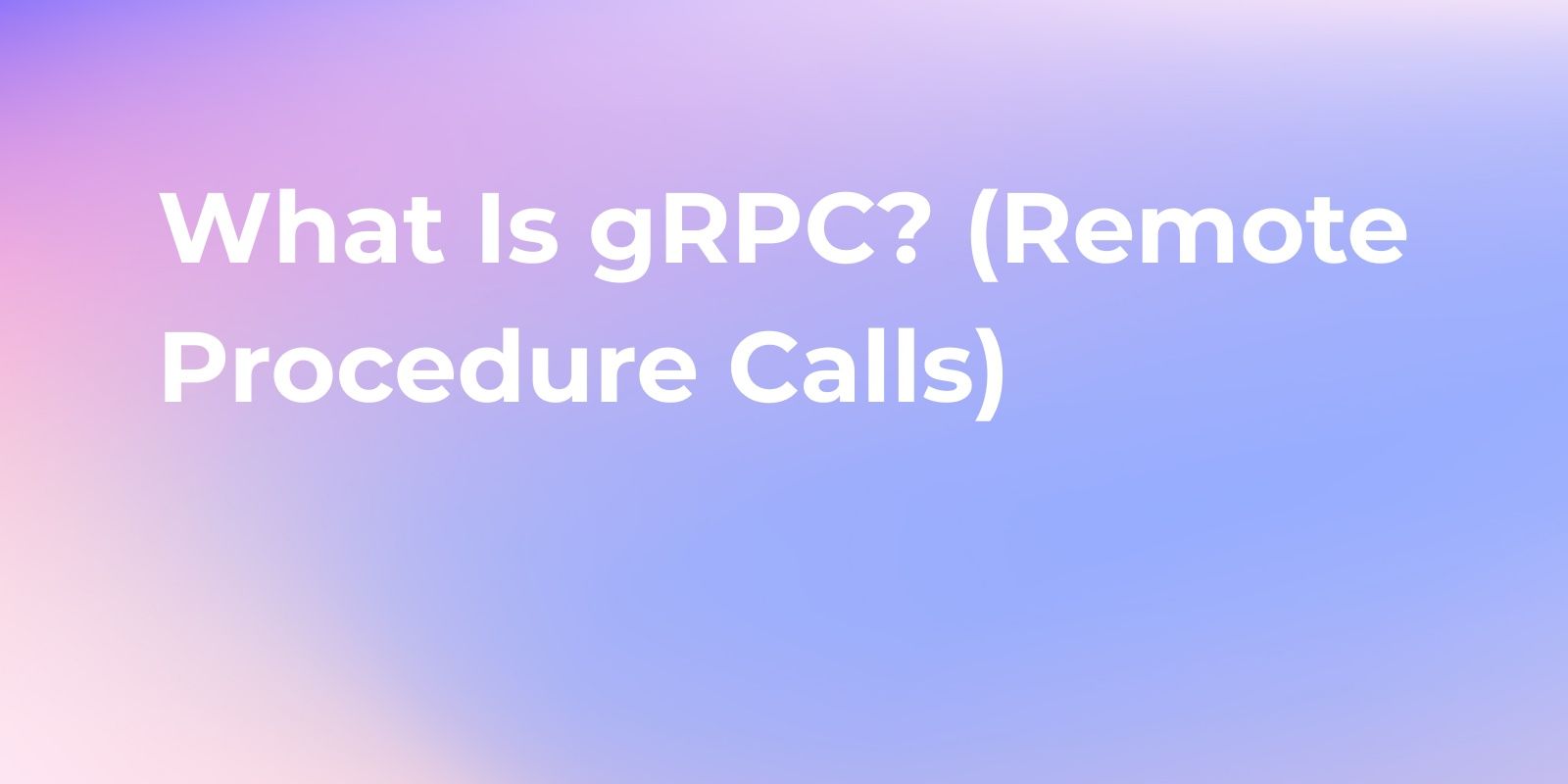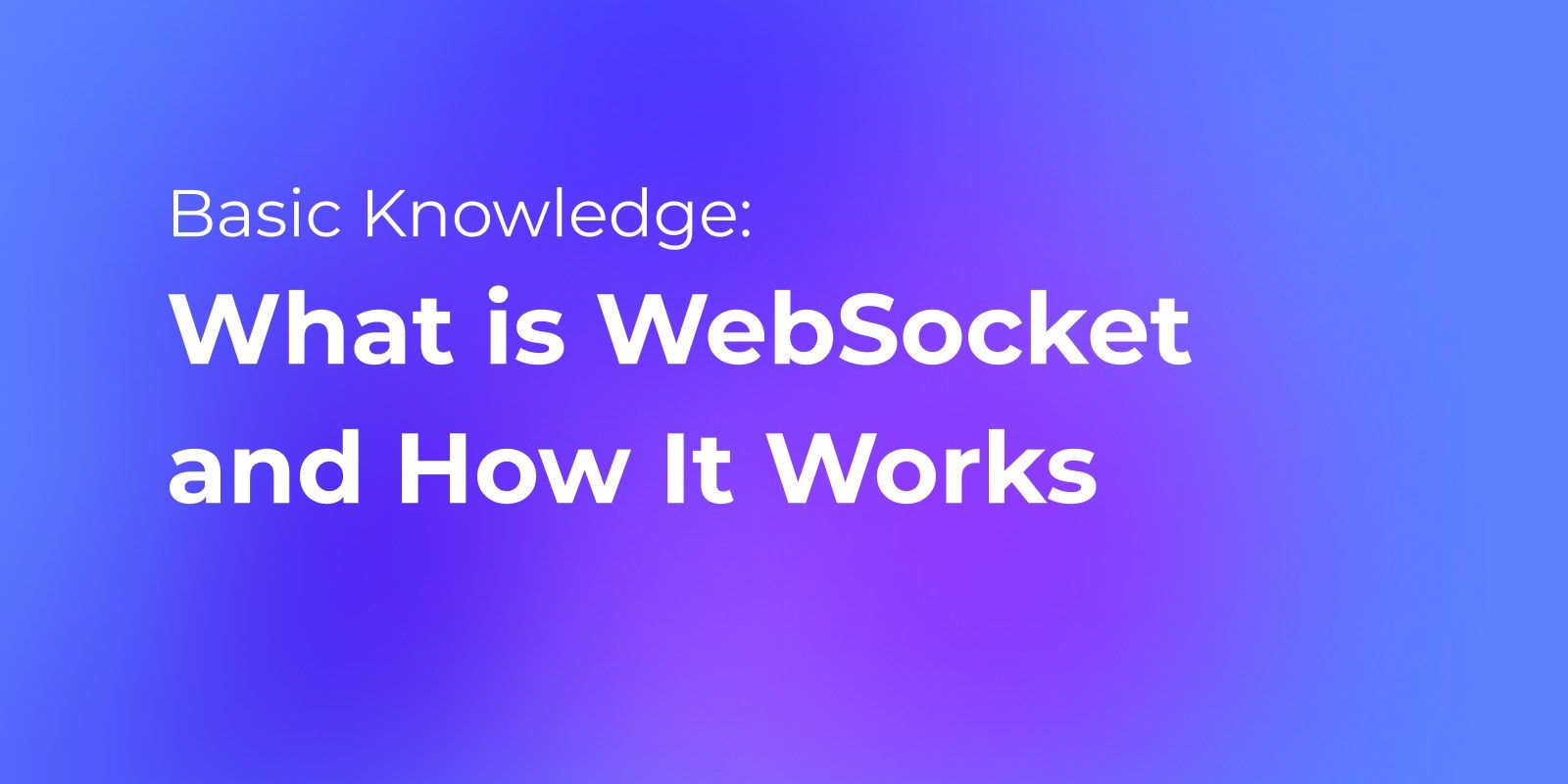gRPC vs. WebSocket: What is the Difference
In this post, we’ll look at the key differences between gRPC and WebSocket, and provide guidance on when it is better to use each technology. We’ll discuss why gRPC and WebSocket have advantages, and how to decide which is best for your application.
When it comes to modern web applications, there are many ways to move data between clients and servers. Two of the most popular methods are gRPC and WebSocket. But what is the difference between them? And when should you choose one over the other?
In this post, we’ll look at the key differences between gRPC and WebSocket, and provide guidance on when it is better to use each technology. We’ll discuss why gRPC and WebSocket have advantages, and how to decide which is best for your application.
What is gRPC?
gRPC is a high-performance, open-source framework developed by Google for building efficient, scalable, and reliable APIs. It utilizes the Protocol Buffers (protobuff) data format, which offers efficient and compact data transfer between clients and servers. One of the critical features of gRPC is its support for streaming, allowing for real-time communication between clients and servers. This means that data can be continuously transferred in both directions, making it ideal for applications that require constant updates.
How gRPC Works?
The way gRPC works is by using a client-server model. Clients make requests to servers using gRPC, and the servers respond with the requested data. This communication is based on a predefined contract or interface called a protobuff definition, which specifies the structure and behavior of the data being transferred. gRPC uses the protobuff definition to generate code for both the client and server, making it easy to develop and maintain the API. For more details, Learn more below.

What is WebSocket and How WebSocket Works?
WebSocket is a communication protocol that enables real-time, two-way data exchange between a client (like a web browser) and a server.
Unlike traditional HTTP, which is one-way, WebSocket allows both sides to send messages independently over a single, long-lived connection. This low-latency, full-duplex communication is ideal for applications like chat, online gaming, and live updates. For additional information, explore further below.

The Pros and Cons of gRPC and WebSocket
When deciding between gRPC and WebSocket for your web application, it's important to consider the pros and cons of each technology.
One of the main advantages of gRPC is its high performance and efficient data transfer. With support for streaming, gRPC allows for real-time updates and continuous communication between clients and servers. This makes it ideal for applications that require constant data transfer and instant updates. Additionally, gRPC utilizes the Protocol Buffers data format, which is known for its efficiency and compactness. This results in faster and more streamlined data transfer.
On the other hand, WebSocket provides a simpler data format and is well-suited for applications that prioritize continuous communication. With WebSocket, both the client and server can send data to each other at any time, allowing for seamless bidirectional communication. WebSocket is commonly used in real-time web applications, such as chat applications and collaborative editing tools.
However, it's important to note that gRPC and WebSocket have different performance benchmarks. Factors such as speed, efficiency, and the specific needs of your application should be considered when choosing between the two. Conducting a grpc vs websocket benchmark can help determine which technology best suits your use case.
gRPC vs. WebSocket - A Comparison of Key Differences
gRPC and WebSocket are popular data transfer methods for modern web apps. They differ in performance and data format. gRPC is high-performance and supports streaming, great for real-time updates. WebSocket has simpler data format, suited for continuous communication. In upcoming sections, we'll explore benchmarks and differences, helping you choose the right tech for your use case.
gRPC vs. WebSocket Performance
When it comes to performance, gRPC and WebSocket have distinct advantages. gRPC, with its support for streaming, offers faster and more efficient communication between clients and servers. Its ability to send real-time updates makes it perfect for applications that require constant data transfer.
On the other hand, WebSocket provides continuous bidirectional communication, making it suitable for real-time web applications. When comparing the performance of gRPC and WebSocket, factors such as speed, efficiency, and the specific needs of your application should be considered. In the next sections, we'll delve deeper into performance benchmarks and other key differences to help you make an informed decision.
gRPC vs. WebSocket Data Format
When it comes to the data format, gRPC and WebSocket have their own distinct approaches. gRPC uses the Protocol Buffers (protobuf) data format, which is known for its efficiency and compactness. This allows for fast and streamlined data transfer between clients and servers.
On the other hand, WebSocket provides a simpler data format, which may be more suitable for applications that prioritize real-time updates and continuous communication. When deciding between gRPC and WebSocket, it's important to consider the specific needs of your application and the data format that best aligns with those requirements.
gRPC vs. WebSocket Benchmark
In the battle of gRPC vs. WebSocket, how do they fare in terms of performance? We've got you covered! In this section, we'll dive deep into benchmark comparisons between gRPC and WebSocket.
Discover the speed, efficiency, and reliability of each technology, helping you make an informed decision for your web application. Whether you're looking for real-time updates or continuous bidirectional communication, understanding the performance differences between gRPC and WebSocket is key.
Websocket in Apidog
Websocket plays a crucial role in Apidog, providing seamless communication between clients and servers. With its ability to enable full-duplex communication, Apidog leverages Websocket to deliver real-time updates and continuous bidirectional communication. This ensures that users can collaborate and interact with the application in a fluid and responsive manner.

Whether it's instant chat updates or simultaneous editing, Websocket in Apidog ensures that data is transferred efficiently and reliably. The performance and reliability of Websocket in Apidog can be compared to gRPC, considering factors such as speed and efficiency.

Once connected, you can draft under the Message tab. Besides writing messages in text, JSON, XML, HTML, and other text formats, binary messages can also be written using Base64 or hexadecimal.
Check out Apidog Help Center to learn more about WebSocket API.


